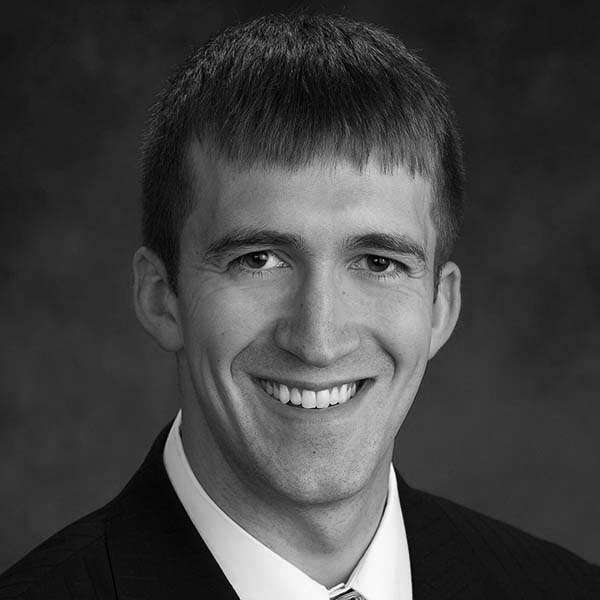By: Ken Johnson, President & CEO of Hutchinson Regional Healthcare System.
Hutchinson Regional Medical Center recently joined healthcare organizations nationwide in observance of American Heart Month. The American Heart Association (AHA) established the annual event in 1964 during a national effort for motivating Americans to adopt healthy lifestyles to prevent cardiovascular disease.
Cardiovascular disease continues to be the leading cause of death worldwide. According to the AHA, 16.5 million Americans are living with heart disease and more than 365,000 will die this year from the disease. Approximately every 39 seconds, an American will have a heart attack. Nearly half of all Americans have at least one risk factor for heart disease.
The Heart & Vascular Center at Hutchinson Regional Medical Center is blessed with a high caliber cardiac care team, including Drs. Mike Hagley, T.K. Reddy, Jamil Ahmed, Costy Mattar, and Robert Fleming. The Heart and Vascular Center at Hutchinson Regional is one of only four hospitals in the state to receive the Blue Cross Distinction “Center for Cardiac Care Plus,” signifying our hospital’s dedication to safe and effective cardiac care. It is not uncommon for patients to travel from as far as Oberlin or Quinter in the state’s far west regions for cardiovascular treatment at Hutchinson Regional. The heart and vascular team also travel to five area towns including Lyons, Ellsworth, Great Bend, Hoisington, and McPherson for outreach clinics. The Heart and Vascular Center has more than 9,000 patient visits each year.
The Hutchinson Regional team has a passion for what they do. In a recent interview, Dr. Fleming recalled his first visit to an operating room and how he immediately knew that is what he wanted as a career. Dr. Fleming is often able to perform bypass surgery “off pump.” During an “off pump” coronary artery bypass surgery, the heart is not stopped and the patient is not put on a cardiopulmonary bypass machine (heart-lung machine). “When the heart is stopped, the organ is deprived of blood flow which may have an adverse long-term effect,” Dr. Fleming said. This technique, under the skilled hands of our surgeon, decreases the patient’s time under anesthesia and their hospital stay. Additionally, it reduces the risk of stroke, renal failure, and bleeding.
Hutchinson Regional is recognized as a leader in treating peripheral vascular disease (PVD) and critical limb ischemia. Our physicians use cutting edge technology, both minimally invasive and surgical, to help patients avoid the possibility of leg amputation and regain a better quality of life. These techniques include such things as drug-coated balloons, minimally invasive aortic aneurysm repair, and venous thrombus removal.
Occasionally patients are too sick to undergo coronary by-pass surgery. In those cases, we are able to utilize the Impella device. It is a small heart pump that helps support the patient during high risk coronary stenting, when the heart is too weak to do the work itself. It assists the pumping function of the heart to ensure blood flow is maintained to critical organs.
A common measurement for heart attack treatment at health care facilities is “Door to Balloon Time,” which translates to the time between the patient’s arrival at the hospital and the moment when blood flow is returned to the heart. National accrediting agencies mandate hospitals to provide positive results within 90 minutes. At Hutchinson Regional, average Door to Balloon time is 54 minutes.
According to the Center for Disease Control (CDC), heart disease doesn’t only affect older adults. In fact, a greater number of younger adults are dealing with the affliction. The increase is partly due to increased rates of obesity and high blood pressure among ages 35-64, putting this age group at a higher risk earlier in life.
Despite the staggering statistics, there is hope on the horizon for anyone willing to change. New and healthy habits may eliminate the risk of heart disease within days after starting and increase longevity of life by as much as several decades.
A healthy lifestyle might be easier to accomplish than one may think. Exercise and a healthy diet are the top two ingredients in anyone’s plan to reduce the onset of heart disease. As little as 30 minutes of daily exercise can significantly lower blood pressure and cholesterol levels. And it’s never too late to stop smoking.
The greatest gift we can give ourselves is the gift of good health. We are less than two months into 2021, so let’s awaken tomorrow morning and make a belated New Years resolution to live a healthier life going forward, knowing the life we save may be our own.




